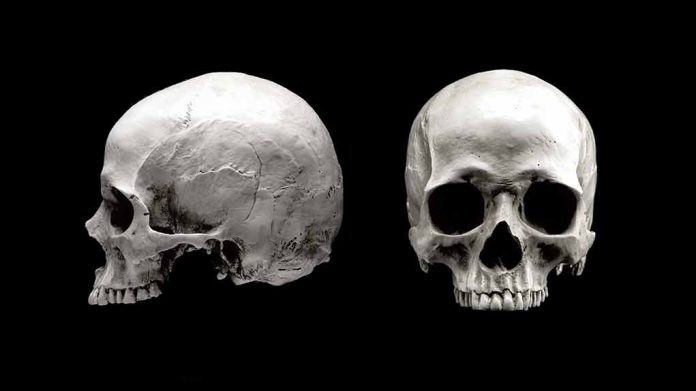
(DailyDig.com) – A jawbone that has been preserved and unearthed in a cave in the eastern area of China reveals a peculiar fusion of old and contemporary traits. This discovery, reported in the “Journal of Human Evolution,” suggests the bone aged 300,000 years belonged to a previously unknown type of ancient human.
The skull was first reported in 2019 by Xiujie Wu, a paleoanthropologist based in Beijing. In 2020, however, scientists found what may be an additional component of the same skull: a mandible.
The finding has allowed for a deeper investigation of the Hualongdong people’s place on the evolutionary tree. The mandible is a mashup of contemporary and ancient design elements. The freshly discovered mandible has an unusual blend of ancient and contemporary anatomical traits, as validated by a computerized comparison with 83 previous jawbones. H. erectus (from eastern Africa to Indonesia), H. sapiens (from all over the globe), and Neanderthals (from Europe and Asia) provided the juvenile and adult bones utilized by Wu and her colleagues.
According to Wu, the jawbone is distinguishable from other Middle Pleistocene hominins due to the presence of H. sapiens-like traits. She also suggests that the Hualongdong tribe may be an undiscovered ancestor or near cousin of early H. sapiens.
However, the idea that contemporary people have their roots in Asian forebears is controversial. Sites in Ethiopia have yielded the earliest H. sapiens fossils, dating back 230,000 years.
According to a paleoanthropologist in China, Yameng Zhang, the image of human habitation in East Asia throughout the Pleistocene is murky. During the Middle Pleistocene, several different kinds of ancient humans lived in what is now East Asia. Whether any of them might be the progenitors of modern humans is currently unknown.
Paleoanthropologist Maria Martinón-Torres of Burgos, Spain, noted that the Hualongdong mandible has certain characteristics with ancient and contemporary traits discovered early in the 2000s at the archaeological site at Jebel Irhoud in Morocco. They are believed to almost be the initial ancestors of modern humans (H. sapiens).
Copyright 2023, DailyDig.com













